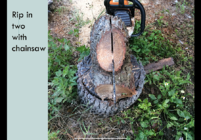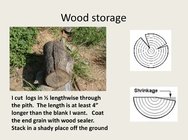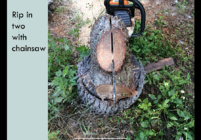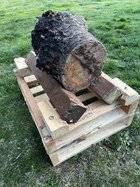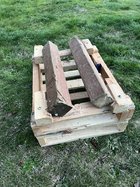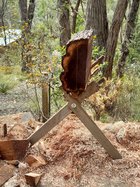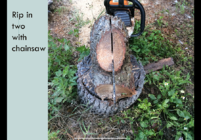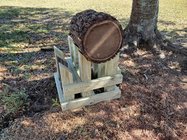Buying "ready-processed" bowl blanks can become quite expensive. As a beginner turner, intrigued by the idea of using "tree-fall" for turning; I have a couple of questions about the process. Of course you need a chain saw to initially cut the fallen tree into manageable sized logs; but then what? What other tools and jigs are needed to further process the log to get it into a lathe mountable bowl blank? I have used a chain saw to fell small trees and break the fallen tree down into log pieces for disposal in the past (my pre-turning experience). I have used an axe and wedges to split the logs into extremely rough "fire-place-ready" pieces; but nothing that would have been safely lathe mountable. That is where my questions begin. What type jigs and tools can be used to safely hold the log so that it can be further sawn in half and what are some of the best sawing tools to use for that process, my first guess is maybe a bandsaw but how the heck do you manage safely and controllably cutting a log on a bandsaw? If a bandsaw is not available, how would you safely manage such a cut with a chain saw; how would you hold the log for a controlled and safe cut? Any assistant anyone can provide is greatly appreciated.
Assuming you can tell me how to get a clean and reasonably flat surface after such a cut, my next question is how to process that half of a log into a round bowl blank? Are there purchasable jigs for that, for use with a small 14" bandsaw; and if so, what are they?
Assuming you can tell me how to get a clean and reasonably flat surface after such a cut, my next question is how to process that half of a log into a round bowl blank? Are there purchasable jigs for that, for use with a small 14" bandsaw; and if so, what are they?


